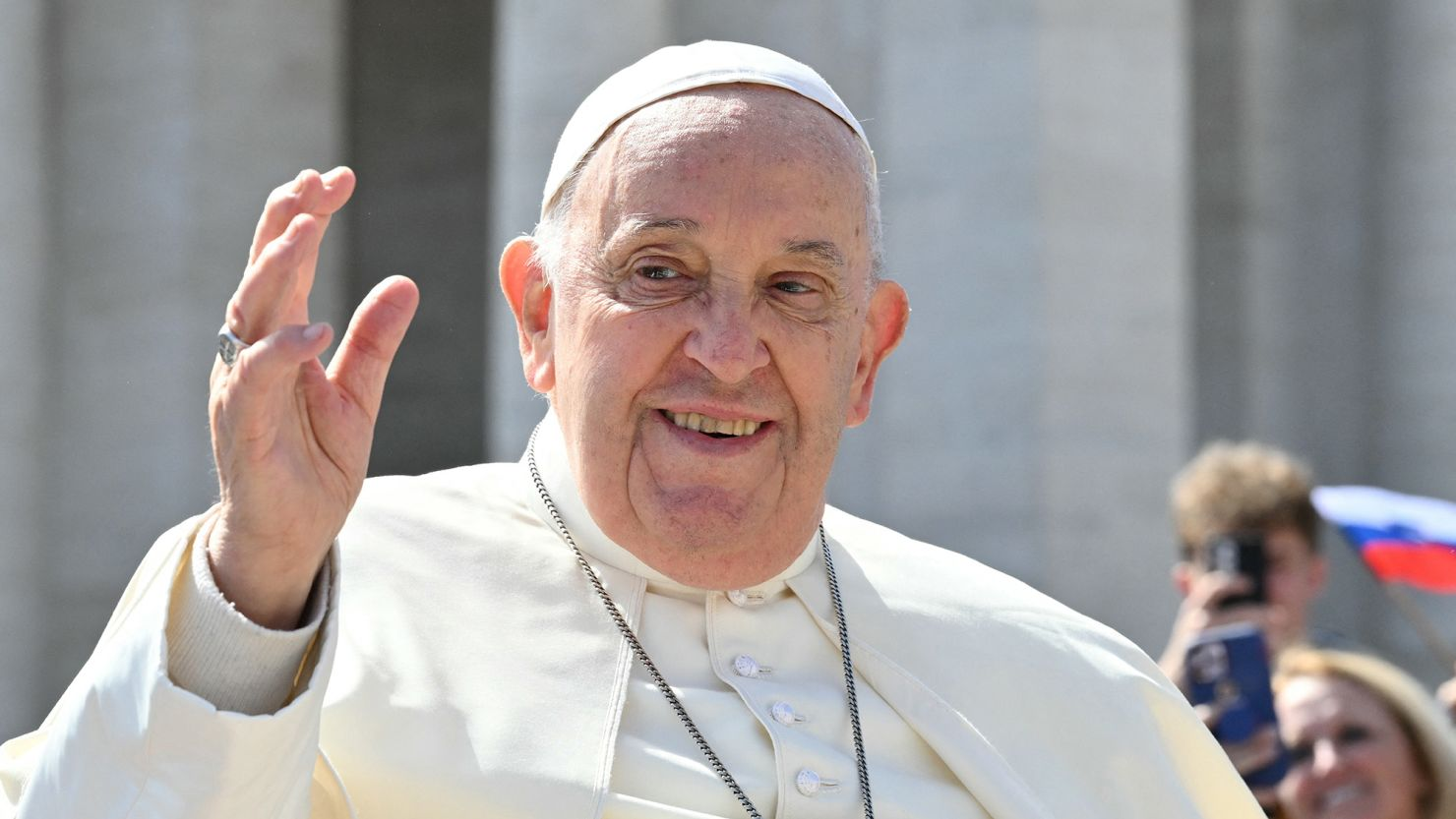Pope Francis’ health has been a subject of global concern in recent months, with the Vatican providing regular updates on his condition amid a series of serious medical challenges. From his initial hospitalization for bronchitis to the more recent diagnosis of bilateral pneumonia and complications involving respiratory distress, the Holy Father’s struggle has captured the attention of millions around the world. As of the latest reports, his condition remains critical even as he continues to show resilience and maintain his spiritual duties.
In this comprehensive update, we delve into the timeline of events surrounding Pope Francis’ hospitalization, the nature of his illness, the treatment efforts underway at Rome’s Gemelli Hospital, and the broader implications for his future at the Vatican.
A Timeline of Medical Challenges
Hospitalization for Bronchitis
It all began earlier this month when Pope Francis was first admitted to the Agostino Gemelli Polyclinic hospital. According to Vatican News, the decision to hospitalize the Holy Father came after his morning audiences revealed that he had been suffering from bronchitis for several days. The inflammation of the airways had made it increasingly difficult for him to speak clearly and deliver his public addresses, prompting the Vatican to take swift action.
The Holy See Press Office confirmed that due to his bronchitis, Pope Francis had delegated many of his prepared remarks to be read by others during several events, including his Wednesday General Audiences. Earlier, on February 6, Vatican News had mentioned that the Pope would be holding his audiences from his residence at Casa Santa Marta to minimize the strain on his health. However, as his symptoms worsened, the need for more intensive medical care became evident.
The Onset of Bilateral Pneumonia
By February 18, diagnostic tests at Gemelli Hospital revealed that Pope Francis had developed bilateral pneumonia. This condition, which affects both lungs, added a new layer of concern to his already fragile state. The diagnosis came after doctors performed a series of tests focused on managing his bronchitis and preventing further complications.
The Holy See Press Office explained that the pneumonia was complicated by a polymicrobial infection—a situation where multiple pathogens are involved. In response, the Pope was placed on a rigorous treatment regimen that included corticosteroids to reduce inflammation and antibiotics to combat the bacterial elements of the infection.
Escalation to a Critical Respiratory Crisis
On February 22, a particularly concerning update emerged. An Instagram post from the Vatican, along with statements from the Holy See Press Office, confirmed that Pope Francis had suffered an asthma-like respiratory crisis earlier that morning. This crisis necessitated the use of high-flow oxygen, underscoring the severity of his condition. Blood tests conducted at that time revealed thrombocytopenia (a low platelet count) and anemia, conditions that required immediate transfusions.
Although the Pope was described as alert and even sitting in an armchair, his overall state was markedly worse than the previous day. The doctors noted that he was far more fatigued and that his condition remained critical. By February 23, it was confirmed that he had spent his ninth consecutive night in the hospital, with his treatment for double pneumonia continuing at Gemelli Hospital.
The Medical Response: Intensive Treatment and Ongoing Care
Diagnostic and Treatment Protocols
Upon his admission, a comprehensive set of diagnostic tests was carried out to assess the full scope of Pope Francis’ condition. These tests were crucial in determining the extent of the pneumonia, evaluating his lung function, and identifying any secondary infections. The diagnostic process was extensive and involved imaging studies, blood tests, and continuous monitoring of his respiratory status.
The treatment strategy focused on several key areas:
- Respiratory Support: With the onset of an asthma-like crisis, the Pope required high-flow oxygen to ensure that his blood oxygen levels remained stable. Although he was not placed on a ventilator, his breathing difficulties meant that he had to limit physical activity significantly.
- Antibiotic Therapy: The identification of a polymicrobial infection meant that a broad spectrum of antibiotics was necessary. These medications aimed to target the various bacteria responsible for the pneumonia and prevent further complications.
- Corticosteroids: These drugs were administered to reduce lung inflammation, a critical step in managing both the bronchitis and the pneumonia. By dampening the inflammatory response, the corticosteroids helped improve his overall respiratory function.
- Blood Transfusions: With blood tests showing thrombocytopenia and anemia, the medical team promptly arranged for transfusions. These measures were essential to stabilize his condition and support his body’s ability to fight off the infection.
Continuous Monitoring and Care
Dr. Sergio Alfieri, head of Pope Francis’ medical team, along with Dr. Luigi Carbone, the Vice-Director of Vatican healthcare services, provided detailed updates during a press conference that lasted approximately forty minutes. Their briefing highlighted that, while the Pope was not in immediate danger of death, his condition was far from stable. They emphasized that he was expected to remain hospitalized for at least another week as his treatment continued.
The Vatican press office reported that, despite his worsening symptoms, the Pope remained in “good spirits.” His routine, though altered, still included moments of rest, prayer, and reading—a testament to his enduring faith and determination. In a light-hearted exchange, when greeted by a doctor with “Hello, Holy Father,” Pope Francis responded with a warm, if enigmatic, “Hello, Holy Son,” showcasing his characteristic sense of humor even in the midst of crisis.
Medical experts have expressed concern about the risk of a bacterial infection entering his bloodstream—a condition known as sepsis—which would significantly complicate his recovery. However, Dr. Alfieri remained cautiously optimistic, suggesting that, with proper treatment, Pope Francis could eventually be discharged and return to Casa Santa Marta. He did, however, caution that the Pope’s chronic respiratory issues were likely to persist even after his hospital stay.
The Broader Implications: A Global Concern
Impact on the Vatican and Worldwide Faith Communities
Pope Francis’ ongoing health challenges have not only raised concerns within the Vatican but have also captured the attention of the global Catholic community. For millions of faithful around the world, the Pope is a symbol of hope, unity, and spiritual guidance. His illness, therefore, carries significant emotional and spiritual weight.
Supporters and believers continue to send prayers and well wishes, hoping that he will overcome this critical phase and return to his pastoral duties. The Holy See has repeatedly expressed gratitude for the outpouring of support, reinforcing the belief that collective prayer and solidarity can play a role in his healing process.
Political and Cultural Reactions
Beyond religious circles, Pope Francis’ health has also become a topic of discussion in broader political and cultural contexts. Analysts note that his medical condition has the potential to influence global perceptions of the Vatican, particularly as it relates to its ability to manage internal challenges and maintain its role as a moral and spiritual leader on the world stage.
While some critics have raised concerns about the impact of his health on the institution, supporters argue that his resilience in the face of adversity reinforces the enduring strength of his leadership. The juxtaposition of his frail physical state with his unwavering commitment to his duties has become a potent symbol of hope and perseverance for many.
Looking Ahead: What to Expect in the Coming Weeks
As Pope Francis continues to battle double pneumonia and its associated complications, the Vatican has signaled that updates will be provided regularly. The medical team is closely monitoring his condition, with particular attention to his respiratory function and the risk of sepsis. While the current prognosis is serious, officials have reassured the public that he is not in immediate danger.
Key developments to watch for in the coming weeks include:
- Continued Treatment: The Pope will remain at Gemelli Hospital under intensive care as doctors work to stabilize his condition and manage his chronic respiratory issues.
- Potential Discharge: Dr. Alfieri has expressed optimism that, with effective treatment, the Pope may eventually be discharged. However, any decision on his release will be made with caution, given the persistent challenges in his respiratory system.
- Ongoing Monitoring: Regular diagnostic tests and blood work will continue to guide the treatment plan, ensuring that any signs of further complications are addressed promptly.
- Public Communication: The Holy See Press Office is expected to provide frequent updates, both through official statements and via social media platforms, to keep the public informed of his progress.
Final Reflections: Faith, Resilience, and the Road to Recovery
In times of profound uncertainty, the health of a global leader like Pope Francis becomes more than just a medical story—it transforms into a symbol of hope and resilience for millions. Despite the critical nature of his condition, the Pope has demonstrated remarkable strength and composure, embodying the very virtues he has long preached about: faith, perseverance, and humility.
For those who look to him for guidance, his struggle is a poignant reminder that even in the face of great adversity, the human spirit can endure and overcome. The coming weeks will undoubtedly be challenging, and the road to recovery may be long. Yet, the collective prayers and support from around the world continue to be a powerful force that bolsters his resolve.
As we await further updates from the Vatican, one thing remains clear: Pope Francis’ battle is not just a personal struggle—it is a testament to the enduring power of faith and the unbreakable spirit of a man who has dedicated his life to serving others. His journey, fraught with medical complications and marked by the challenges of his chronic respiratory issues, serves as a beacon of hope for those who believe in the strength of collective prayer, compassionate care, and the promise of a brighter future.
In these turbulent times, as we face uncertainties both large and small, let us remember that resilience is born out of struggle, and that even the most fragile among us can shine a light in the darkness. Pope Francis’ story is one of this very kind—a narrative of enduring strength in the face of life’s most daunting challenges, and a reminder that hope, when nurtured by faith, can truly move mountains.
This is the current state of Pope Francis’ health—a complex, ongoing battle against bronchitis, bilateral pneumonia, and respiratory complications that have left him in critical condition. With dedicated medical professionals at Gemelli Hospital working tirelessly to support him, and with millions around the world sending their prayers and well wishes, the hope remains that he will eventually overcome these challenges and return to his spiritual mission. As we continue to monitor his progress, we hold onto the belief that the light of hope and faith will guide him through this storm, and that every day brings us closer to a time when the Holy Father can once again lead with strength and compassion.

